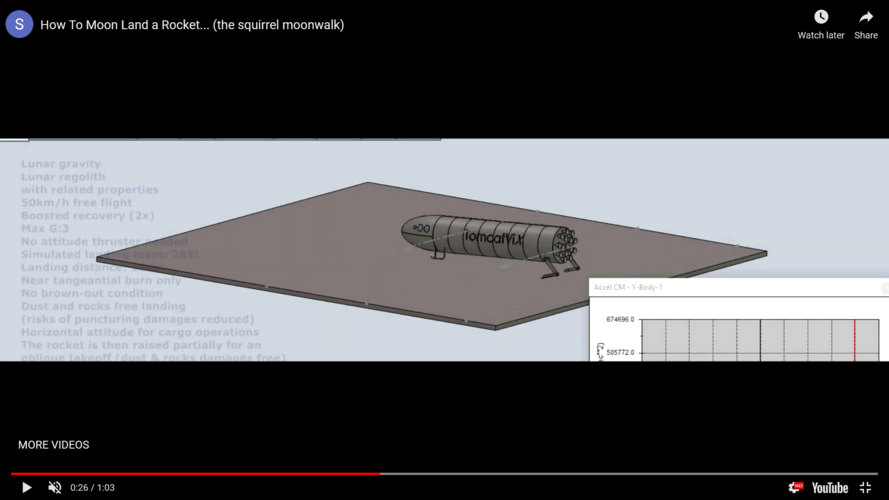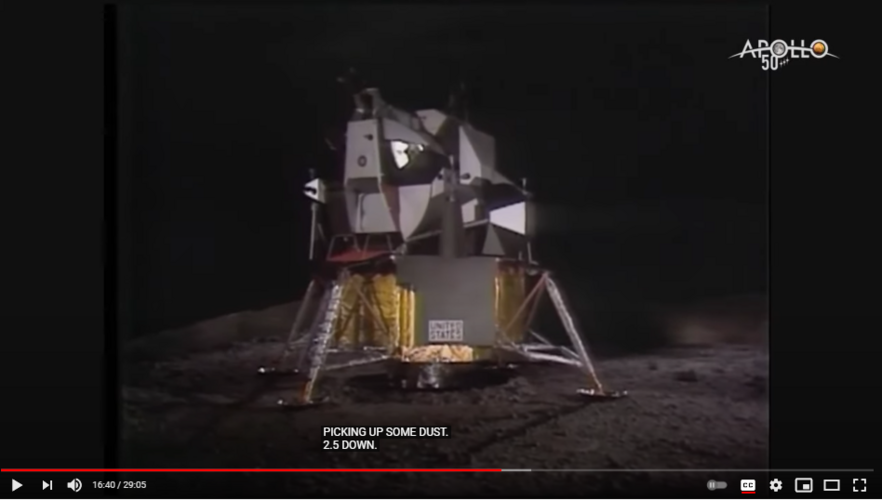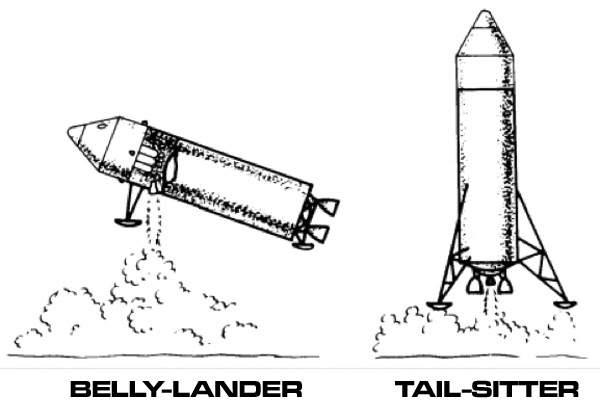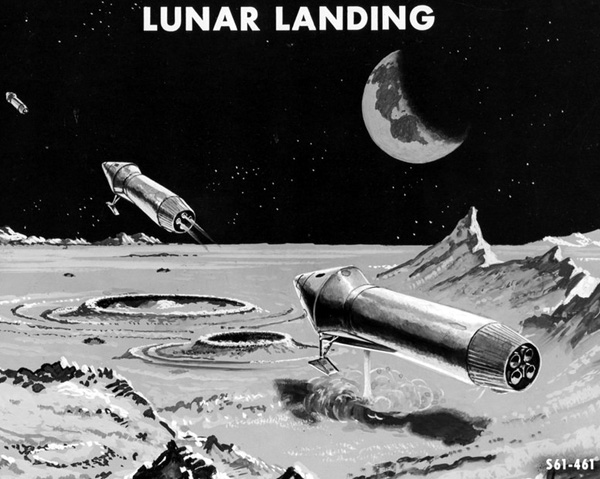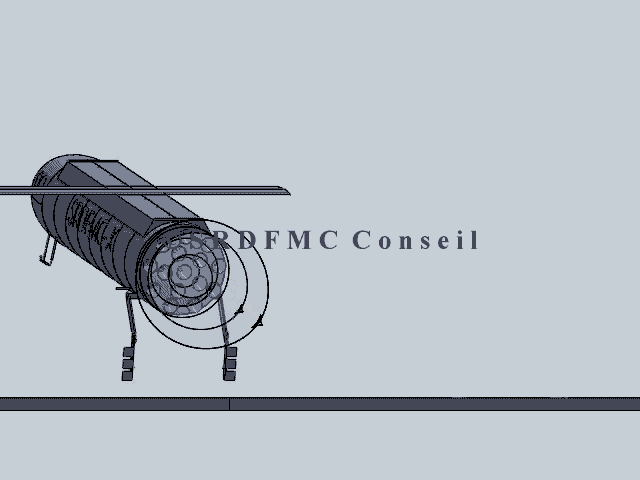To be fair, (and no I don't want to be but...

) he's assuming that everything that comes out of Musk/SpaceX is "fact" rather than a lot being 'supposition' because SpaceX/Musk don't HAVE to tell anyone the real numbers. Secondly Musk specifically said at one point that he/they had 'traded' flyback but dropped it early on with no actual evidence they did. (And frankly a lot they didn't as it would have been a very different design from the get go it they had and since they were aiming for 'simple' rather than most efficient it's likely they didn't really do any significant trade work. More specifically as noted Musk wasn't interested)
VTHL would have required more aerodynamic work to be done and they could more easily take existing booster work and use that to base the Falcon 9 on. Which is what they did and why the initially looked towards parachutes and water landing. VTVL came about from the work Musk wanted to do for Mars and in context it makes sense but it has it's drawbacks which pretty much show why they didn't do any actual 'trades'. (A 15% payload loss isn't minor after all)
The
XS-1 was to have a turn around cost of less than $5 million and the 'operational' booster less than $10 million per flight. Well never know for sure but DARPA and NASA both agree the prices were likely correct given the parameters. Total launch costs were aimed at less than $50 million (with expendable upper stage included) for the expected flight rate. Other studies of such VTHL boosters came out to around the same prices.
The thing is that with a reusable first stage the overall utility is dependent on the flight rate and currently SpaceX has not actually shown that reusability has enough economic impact to actually reduce the costs.
Apples and oranges actually as the 737 is vastly more economic and efficient than the Falcon 9 can every hope to be. Even comparing the X-15 to the Falcon 9 isn't applicable due to the more specialized and experimental nature of the X-15. Operations and maintenance costs of VTVL and VTHL are likely to be almost the same though most of the infrastructure and operations already exists in depth for VTHL and not for VTVL so the economics is likely better for the former than the later. Development costs will be a bit higher due to the nature of VTHL flight but unlike the Falcon 9 the VTHL will by design be reusable from the very start so the overall construction and operations costs will likely be lower. Flyback actually requires LESS specialized infrastructure and gains operational savings from being more similar to aircraft operations, (no aircraft are not spacecraft nor are spacecraft aircraft there's just some cross over for a winged/wheeled design

) than VTVL.
There is no difference, it's a choice to expand the booster or not. That's kind of the point in that they simple use a 'reusable' booster and expend it rather than recovering it. They just don't use some systems in the expendable case, they don't remove them.
The thing is that they don't know whereas actually calculating the life time of a VTHL is pretty straight forward and something that's pretty easy to determine during flight testing. (A very good reason for reuse from the start as an actual program goal :
(Ok why it lets me collapse 'some' responses and doesn't others....

)
To be clear there's a reason Musk is adamant that those 'aerodynamic surfaces' are NOT "wings" since he's come out against the very idea of a lifting reentry and landing. (Hence "skydiver-not-glider" and all that bunk

)
Yes he thought about a fully reusable TSTO, rather obviously given the initial idea of reusing the Falcon 9 Upper Stage, the problem is it doesn't work well with the VTVL concept as the Upper Stage gets too heavy to fast and ends up with little or no payload unless you 'trick' things out. (Such as changing propellants, using lifting reentry and non-propulsive landing, etc) Nothing Musk was willing to invest in for the Falcon when he'd moved on to Starship.
(Again a missed opportunity since it would have arguably been rather straight forward to do so but it's not like he's going to let anyone else use the Falcon so...)
In context, payload return is a 'niche' capability and frankly not something that SpaceX has seriously considered beyond what Dragon can do. For most other missions it's a distraction and not worth the effort or payload losses. Arguably some "simple" modifications (note those quotes

) to the upper stage would allow enough margin to incorporate reusability to some extent but keeping in mind that in MOST missions, (Starlink in LEO is really an outlier and more akin to a Dragon/ISS mission than the 'usual' GTO missions) Coming back from GTO is arguably harder than coming back from LEO but again there's a number of ways that could be explored to make this pretty doable. But again not something Musk is interested in. I can't agree enough that the Falcon 9 is being used far less than it is capable of being but again that's directly in Musk's hands unless SpaceX (or Falcon) gets spun off and that's unlikely in the extreme.
I've argued elsewhere that you can actually replace the Falcon 9 Upper Stage with a variety of different upper stages for different tasks in a fairly straightforward manner, (fully reusable, partially reusable {Dragon} or fully "expendable" with a varying degree of 'expandable' given some uses on-orbit) but it would take time and effort that Musk isn't willing to spend. I also have come to dislike, but understand, the general "popularity" of VTVL reusability given a focus on more than just landing on Earth. (As noted 'wings-and-wheels' don't work so hot on the Moon or Mars though to be honest Kraft Ehricke's Lunar Slide-Out Lander isn't as far out as one might think

)
Still in any case a winged VTHL booster has always made a lot of sense as it's not going to the Moon or Mars in any case and that's why it keep coming up over and over again. Unfortunately it's unlikely we'll see another set of government spending to develop new boosters and as noted the 'utility' of reusability is still in doubt unless the overall flight rate goes way up so I don't see any of the other booster makers taking the leap.
Actually correct as has been noted the actual utility of reusability isn't proven yet and it's not likely to be given the current flight rates. Personally I favor reusability as much as possible but it's not as clear cut as many make it out to be.
"Technically" it's not as the area isn't near enough to get more than some very basic control at low speeds. And arguably nothing we've seen indicates it has really any use at high speeds so... Fully deployed there's no landing that survivable if the rockets don't work so they aren't really 'useful' anywhere outside the narrow parameters of the 'planned' flight profile. Yes they could use a LOT more area to cut down on the Mars landing velocity but it's not likely to happen. They are going to "simple" despite the drawbacks in a hope to keep the costs down but it will all depend on how good, (and how robust) the TPS ends up being. There's a good argument for 'flattening' (and broadening the edges) of the upwind side of the Starship to give it better hypersonic aerodynamics but that would add complexity and cost despite the advantages of lower peak thermal pulse and better handling during reentry. (It would also fully protect the fins and canards from reentry heating but again there's trade offs

)
There's also a half dozen promising reentry technologies I'd be throwing money at were I Musk but in context he'd not be 'in charge' if he did so, so I can see why he'd not be interested at this point

Randy

